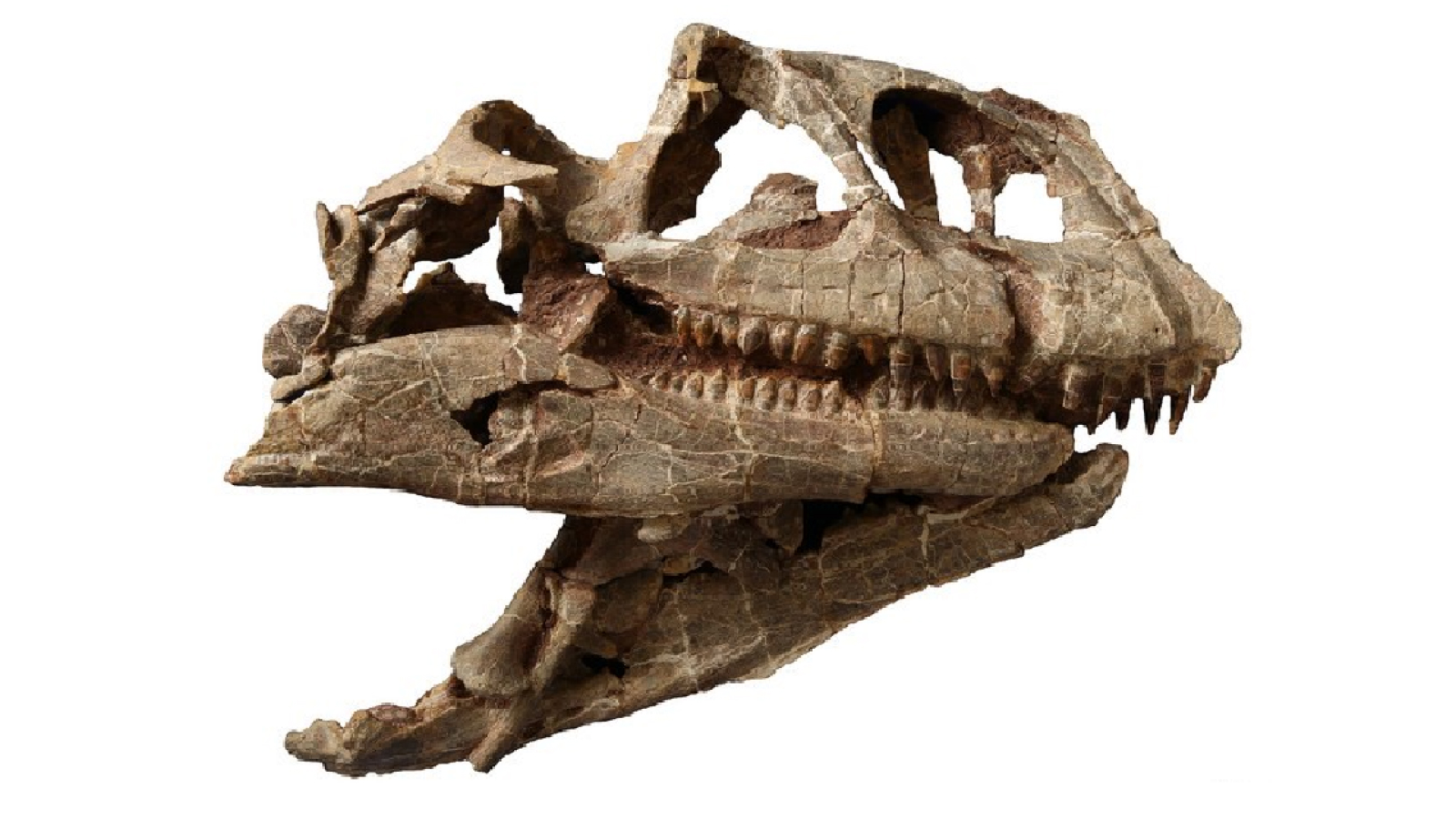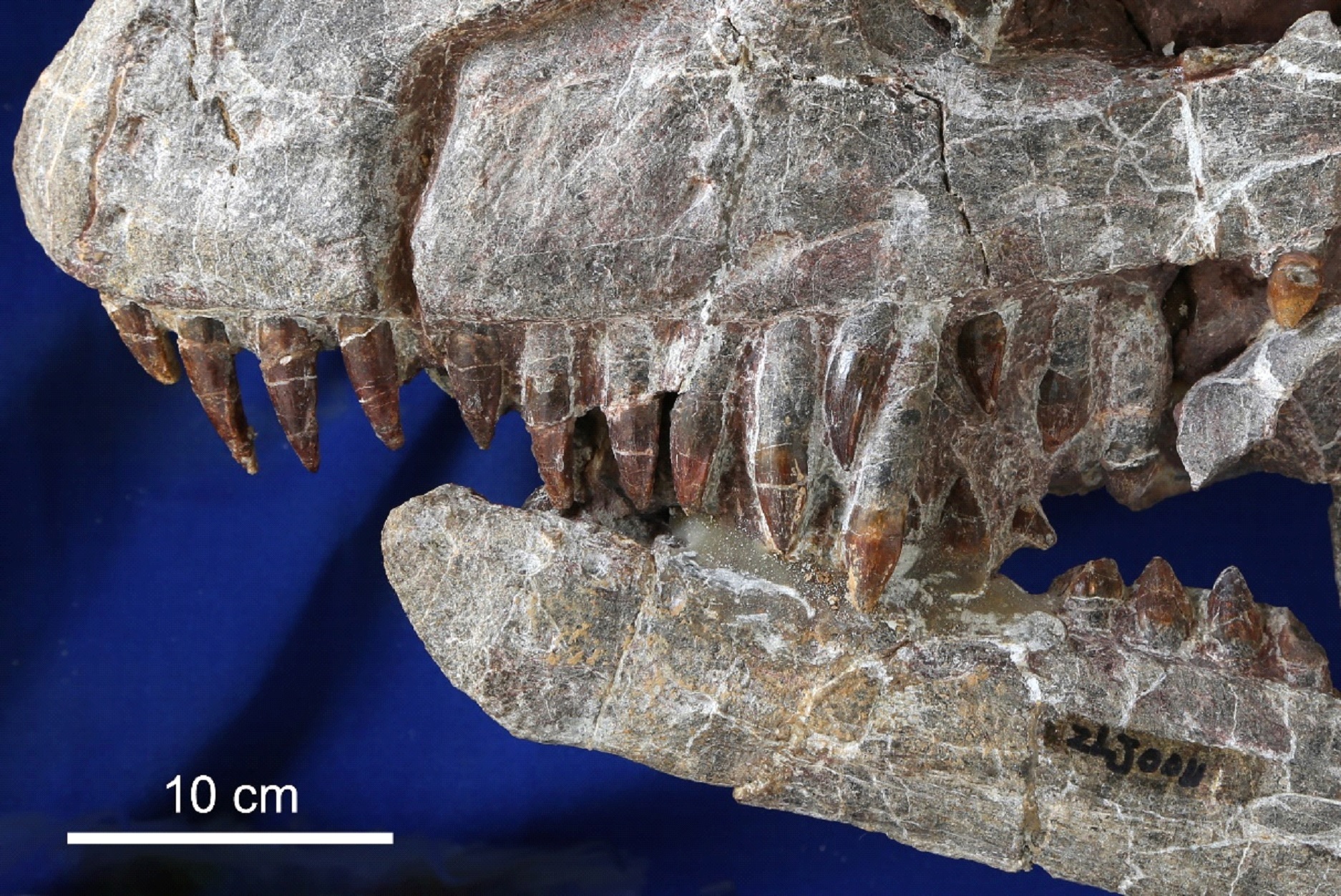
An enormous, extremely well preserved dinosaur skull unearthed in China belongs to a never-before-seen species, researchers say.
The early sauropod relative was discovered in 2007 in the Lufeng Dinosaur National Geopark in Yunnan Province, southern China. It grew to massive proportions — reaching up to 33 feet (10 meters) in length, researchers estimate.
The species, named Lishulong wangi, belongs to the group known as the sauropodomorphs, which includes sauropods — such as Brontosaurus and Diplodocus — and their ancestors.
The sediments in which it was found date to the Early Jurassic Hettangian Age (201.3 million to 199.3 million years ago), according to the study published Dec. 12, 2024 in the journal PeerJ.
L. wangi is likely the largest non-sauropod sauropodomorph unearthed from the Lufeng Formation, the authors claim. The formation has been particularly rich in early sauropodomorphs: seven other genera have been discovered there as well.
Related: 'Red flags' raised over ancient sea monster pulled from Moroccan mine
The finely grained sediments of the region helped preserve the animal remains, study lead author Qian-Nan Zhang, a paleontologist with the Institute of Vertebrate Paleontology and Paleoanthropology at the Chinese Academy of Sciences, told Live Science. The clays, sand and silt deposited by the lakes and rivers that shaped the landscape protected the dinosaur remains from erosion. The minerals in the sediment then infiltrated the bone structure, contributing to fossilization.
These conditions likely contributed to the exquisite preservation of the skull, which is rare in sauropodomorphs. While it was squashed by the sediments layered on top of it, only a handful of the cranial bones were lost.

Non-sauropodan sauropodomorphs were the most prevalent medium to large herbivorous dinosaurs until the Middle Jurassic (174.1 million to 163.5 million years ago). Unlike the plodding behemoths that replaced them, they were able to walk on just their hind limbs. They share ancestors with theropods — such as Tyrannosaurus rex — which retained a bipedal posture.
The new discovery comprises a skull and nine or neck vertebrae. "Due to the lack of preserved shoulder girdle, pelvic girdle, and limb bones in this specimen, it is not possible to determine whether it was bipedal or quadrupedal," Zhang said.
However, she added that its nearest relative, Yunnanosaurus, is thought to have been partially quadrupedal (being able to switch between two and four legs), suggesting that L. wangi may have been as well. The researchers distinguished the two species in part due to the differing sizes of their nasal openings — L. wangi had bigger nostrils.
The species was probably an herbivore. "Their main food sources were probably gymnosperms and other primitive plant types. This likely included ferns, cycads, ginkgos, and conifers," Zhang said.
The animal was likely mature when it died. "Based on the fusion of skeletal elements in the skull and cervical vertebrae, as well as the overall size of the individual, it is inferred that this specimen likely represents an adult," Zhang said.
It's still unclear how L. wangi met its end. "Because the specimen is only preserved with its skull and cervical vertebrae and lacks other bones, it suggests that the remains have undergone transportation after death, complicating the determination of the cause of death," Zhang said.







